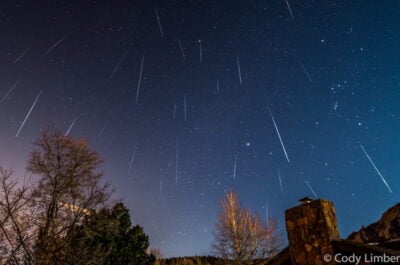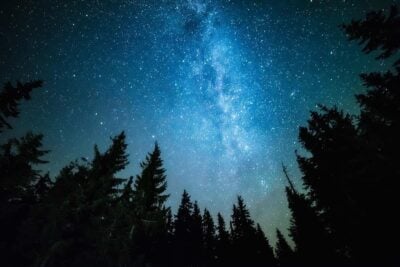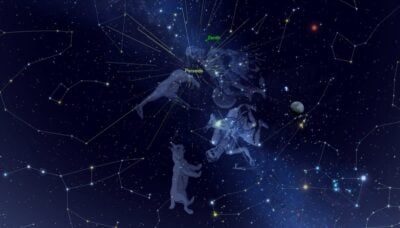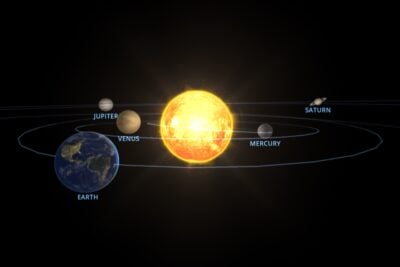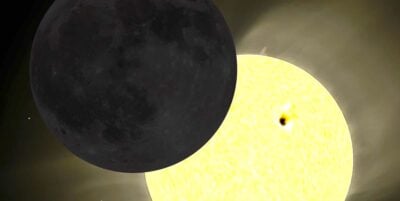The annual Orionid meteor shower takes place from 2nd October through to 7th November. Peak activity occurs on the evening of 20th October and the early hours of the 21st October when approximately 20 meteors per hour might be seen —
the best time being from midnight through to dawn. (main image credit: SLOOH)
The meteors (or shooting stars) are caused from the dust trail left over by Halley’s comet. As the dust particles enter Earth’s atmosphere at speed they burn up through friction with their energy being converted from mass into light. They are named the Orionids after the part of the sky they seem to originate from, or the “radiant”, in this case the constellation of Orion.

Image credit: Sky and Telescope
To make things even better the peak of the shower this year takes place at new moon. The skies will be free from moonlight and darkness will allow any fainter shooting stars to be spotted. It’s therefore well worthwhile planning ahead and travelling to a dark sky location to escape light pollution.
Hours of darkness on 20th October –
[gostDarkSkyDate date=”2017-10-20″ latitude=”54.013″ longitude=”2.32″ location=”Forest of Bowland”]
Wherever you choose to go first tell someone where you are going, wrap up warm, take some hot drinks and snacks and be patient! Good luck spotting them! We’ll be keeping our fingers crossed the weather is favourable for you!
Public stargazing events 19th October – 22nd October
{"scope":"2017-10-19,2017-10-22","limit":"0","em_ajax":true,"query":"GlobalEventsMapData","width":"100%","height":"300px","id":953684943}
No events found
